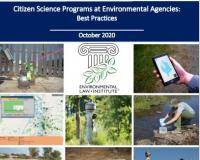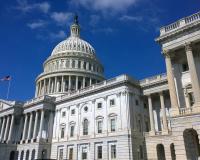
Vibrant Environment
All
All | Biodiversity | Climate Change and Sustainability | Environmental Justice | Governance and Rule of Law | Land Use and Natural Resources | Oceans and Coasts | Pollution Control

Environmental agencies are increasingly transforming their approach to citizen science, from viewing it as a source of data primarily for education and awareness to a potential source of concrete value for their programs. Although this relationship has existed for some time, the emergence of new technologies, an increasingly aware public, and the rise of unexpected pollution events has reinvigorated the way agencies and the public work together.

Environmental agencies are increasingly transforming their approach to citizen science, from viewing it as a source of data primarily for education and awareness to a potential source of concrete value for their programs. Although this relationship has existed for some time, the emergence of new technologies, an increasingly aware public, and the rise of unexpected pollution events has reinvigorated the way agencies and the public work together.

Environmental agencies are increasingly transforming their approach to citizen science, from viewing it as a source of data primarily for education and awareness to a potential source of concrete value for their programs. Although this relationship has existed for some time, the emergence of new technologies, an increasingly aware public, and the rise of unexpected pollution events has reinvigorated the way agencies and the public work together.

As we are moving from an aggressively deregulatory period to one in which regulation is more likely to be seen as important in advancing environmental policy, let’s take a quick look at what to anticipate from the three branches of the federal government.

As we are moving from an aggressively deregulatory period to one in which regulation is more likely to be seen as important in advancing environmental policy, let’s take a quick look at what to anticipate from the three branches of the federal government.

As we are moving from an aggressively deregulatory period to one in which regulation is more likely to be seen as important in advancing environmental policy, let’s take a quick look at what to anticipate from the three branches of the federal government.

National Environmental Policy Act (NEPA) administration is in a serious tangle, given new Trump Administration regulations, the long-standing procedures administered by scores of federal agencies, and inconsistent environmental review obligations depending on various dates. This knot, like the legendary knot of King Gordias, is not easily unraveled. But it is not impossible.

National Environmental Policy Act (NEPA) administration is in a serious tangle, given new Trump Administration regulations, the long-standing procedures administered by scores of federal agencies, and inconsistent environmental review obligations depending on various dates. This knot, like the legendary knot of King Gordias, is not easily unraveled. But it is not impossible.
Advancing Human Rights-Based Approaches and Conflict Sensitivity in Forest Monitoring and Management

Harbouring the vast majority of life on Earth, forests are a vital natural resource that provide ecosystem services essential for life and livelihoods. Forests are sources of important raw materials such as timber, wood fuel, and non-timber-forest products. However, competition to access forests, like many natural resources, is often a motive for human conflict. The United Nations Environment Programme (UNEP) estimates that in the last 60 years, at least 40 percent of all intrastate conflicts have had a link to natural resources.

In observing the U.S. Environmental Protection Agency’s 50th anniversary, I have a few early-days reflections. I had my first brush with EPA while in law school, when I drafted South Carolina’s Resource Conservation and Recovery Act Interim Status and Part B regulations. “Drafting” is somewhat generous, as my work was primarily cutting and pasting the EPA rules that were set up to apply in the absence of state program authorization and conforming them, and their corresponding preambles, to the South Carolina context. But it was a meaningful baptism into the complexity of EPA’s work within the labyrinth that is the Federal Register. In my last year of law school, I was accepted under the honors program at the U.S. Department of Justice, and was soon off to work as a trial attorney in their Environmental Enforcement Section. My primary client? EPA.